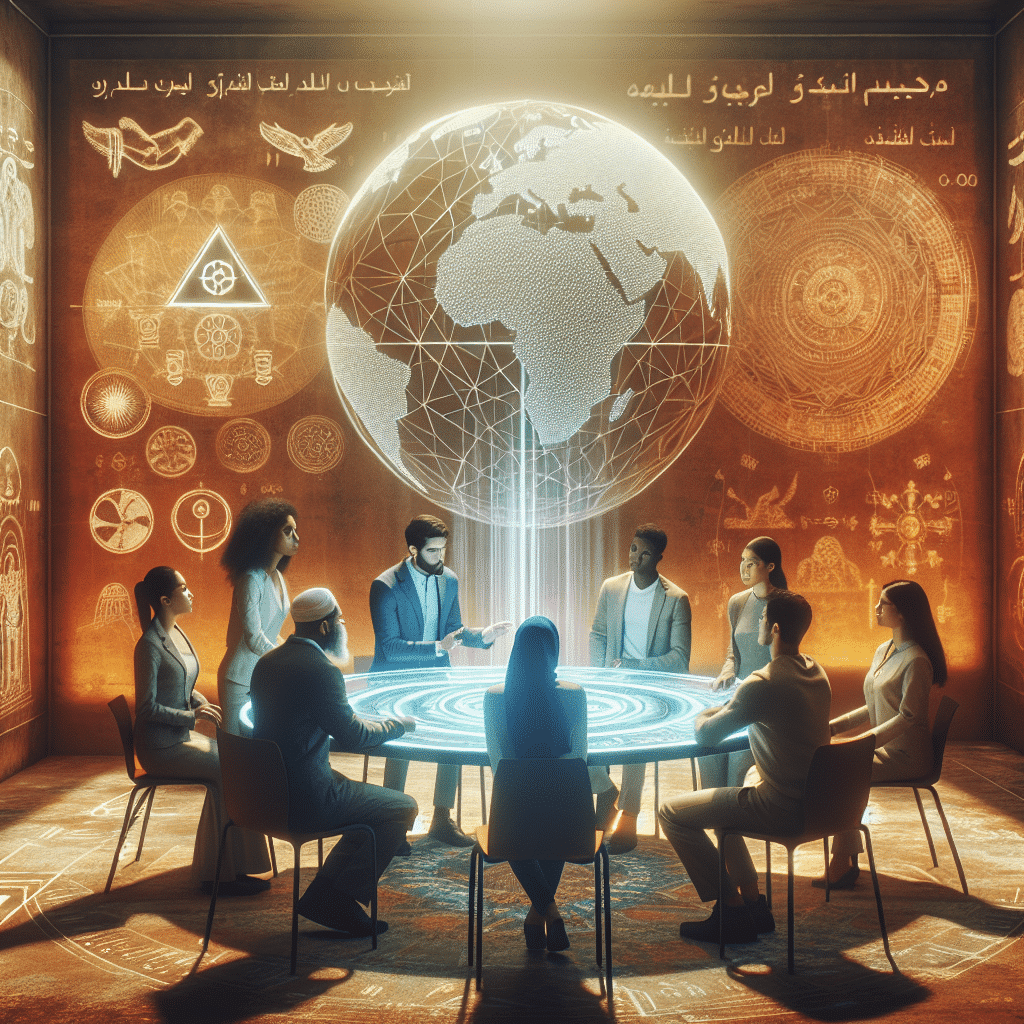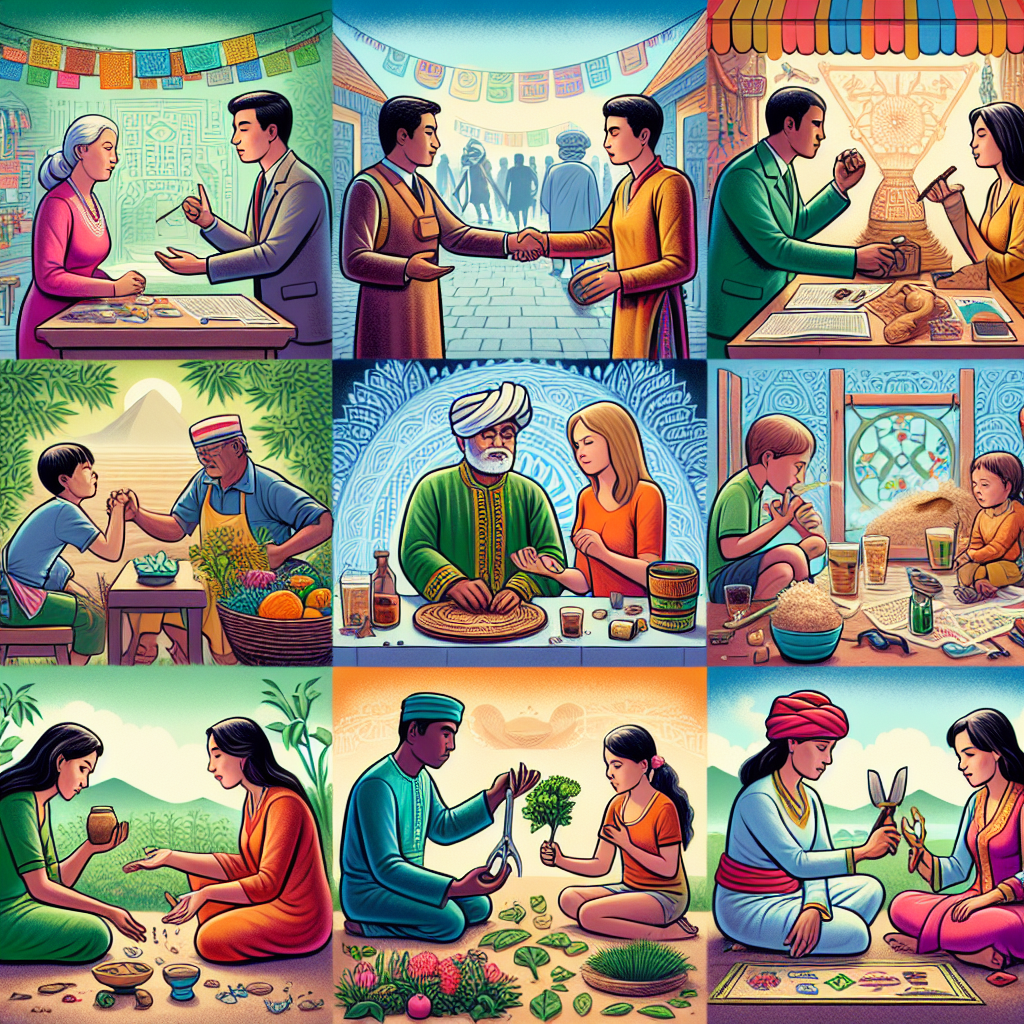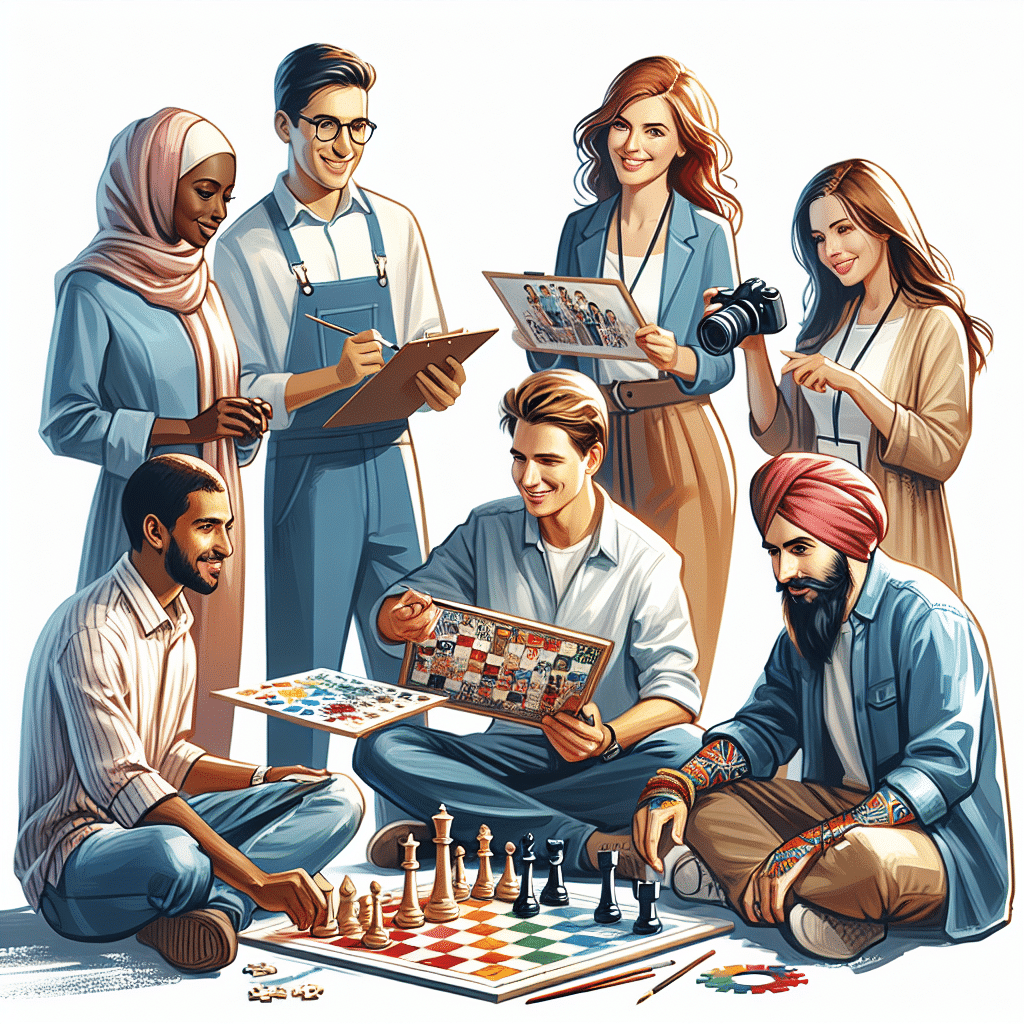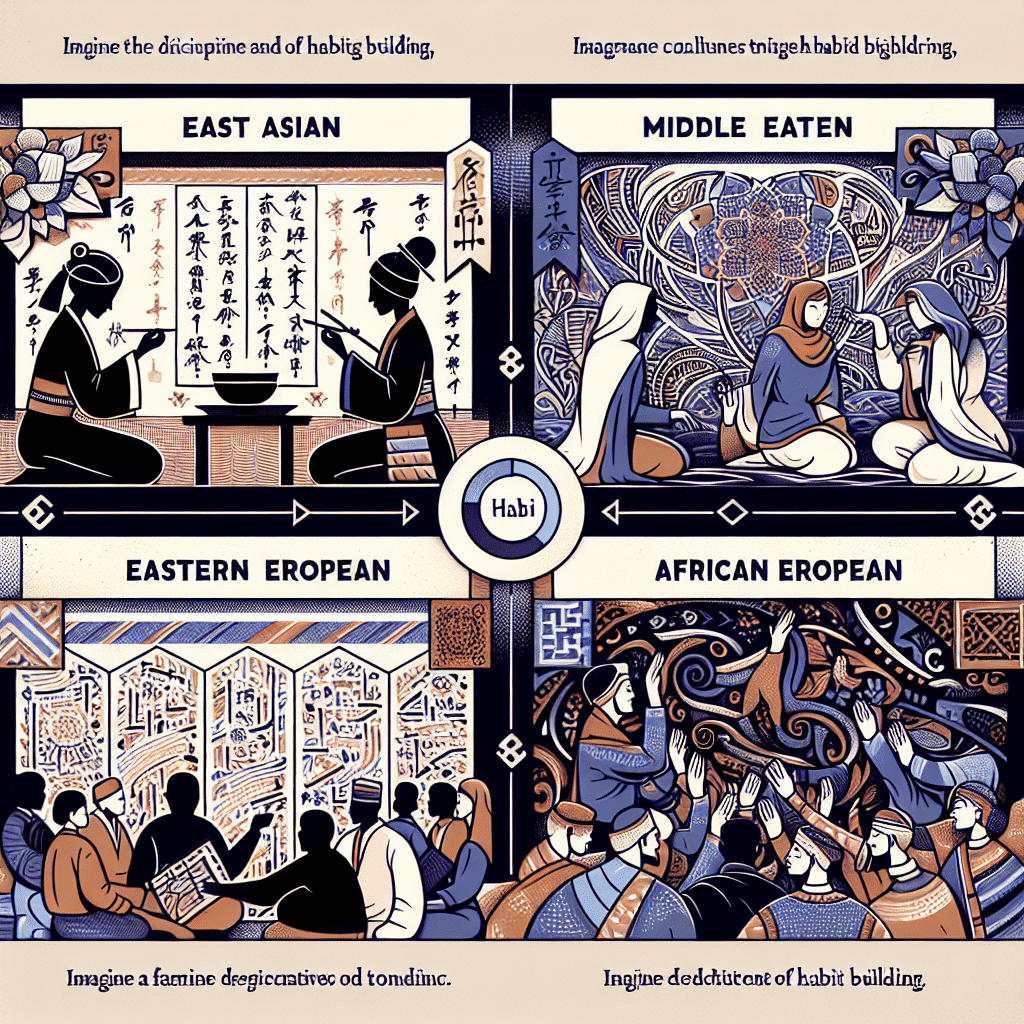
Problem-solving is a universal concept that is shaped by cultural narratives and beliefs. Different cultures have their unique approaches to tackling challenges and finding solutions. Understanding the cultural influences on problem-solving can provide valuable insights into how societies navigate complex issues.
Traditional problem-solving methods are deeply grounded in cultural values and practices. For example, in many indigenous communities, problem-solving is often a collective effort that involves the wisdom of elders and consultation with ancestors. These traditional methods emphasize community harmony, respect for nature, and the importance of interconnectedness.
Modern adaptations and innovations in problem-solving reflect a blend of traditional wisdom and contemporary techniques. For instance, many Asian cultures incorporate principles of mindfulness and meditation in problem-solving processes. These practices help individuals focus their thoughts, enhance their creativity, and cultivate a sense of calm amidst challenges.
Globalization has brought about a shift in problem-solving narratives, as cultures from around the world intersect and influence each other. This interconnectedness has led to the exchange of ideas, technologies, and problem-solving strategies across borders. As a result, individuals and societies are increasingly adopting hybrid approaches that draw from multiple cultural perspectives.
Looking ahead, future trends in problem-solving are likely to embrace diversity, inclusivity, and sustainability. As the world becomes more interconnected, there is a growing recognition of the need to incorporate diverse cultural perspectives in problem-solving processes. By embracing cultural narratives of problem-solving, individuals and societies can harness the power of collective wisdom to address complex challenges and build a more harmonious world.
Traditional problem-solving methods
Cultural narratives play a significant role in shaping traditional problem-solving methods. In many societies, problem-solving approaches are deeply rooted in historical practices, passed down through generations. For example, indigenous communities often rely on oral traditions and storytelling to convey problem-solving strategies. These stories serve as a guide for navigating challenges and finding creative solutions.
In Asian cultures, practices such as meditation and mindfulness are integrated into problem-solving processes. The emphasis on harmony and balance in Eastern philosophies like Taoism and Confucianism influences problem-solving strategies, with an emphasis on finding holistic solutions that consider the interconnectedness of all aspects.
In African cultures, communal problem-solving is a common approach, where the community as a whole works together to address challenges. This collective mindset fosters collaboration and unity, often leading to innovative solutions that benefit the entire community.
Furthermore, traditional problem-solving methods often involve a strong spiritual or religious component, with rituals and ceremonies performed to seek guidance from ancestors or higher powers. These practices not only provide a sense of guidance but also instill a deeper sense of purpose and connection to the problem at hand.
Overall, traditional problem-solving methods are deeply ingrained in cultural narratives, reflecting the values, beliefs, and practices of diverse communities worldwide. By honoring these traditional approaches, we can learn valuable lessons in resilience, adaptability, and resourcefulness that can be applied to modern challenges.
Modern Adaptations and Innovations
In today’s fast-paced and interconnected world, cultural narratives of problem-solving have undergone significant adaptations and innovations. With advancements in technology and communication, traditional methods have evolved to meet the demands of a globalized society.
Technology-driven Solutions
One major shift in problem-solving narratives is the increasing reliance on technology to address complex challenges. From artificial intelligence and data analytics to virtual reality and blockchain technology, modern problem-solvers are leveraging innovative tools to find creative solutions. These technological advancements have not only increased the efficiency of problem-solving processes but have also opened up new possibilities for tackling issues on a larger scale.
Collaborative Approaches
In contrast to individualistic problem-solving methods of the past, contemporary narratives often emphasize the importance of collaboration and teamwork. Cross-cultural partnerships, interdisciplinary collaborations, and crowdsourcing initiatives have become common strategies for addressing diverse and multifaceted problems. By bringing together individuals with different perspectives and expertise, these collaborative approaches foster creativity and encourage the development of innovative solutions.
Social Impact and Sustainability
Another significant trend in modern problem-solving narratives is the growing emphasis on social impact and sustainability. As global challenges such as climate change, poverty, and inequality become increasingly urgent, problem-solvers are turning their attention to solutions that not only address immediate issues but also create long-term positive outcomes for society and the environment. Concepts such as social entrepreneurship, sustainable development, and corporate social responsibility are shaping the way problems are approached and solutions are implemented.
Cultural Sensitivity and Diversity
In a world characterized by cultural diversity and interconnectedness, problem-solving narratives are increasingly taking into account the importance of cultural sensitivity and inclusivity. Recognizing that solutions must be contextually relevant and respectful of different cultural norms and values, modern problem-solvers are incorporating cultural considerations into their approaches. By embracing diversity and promoting intercultural understanding, these narratives aim to create solutions that are equitable and sustainable for all individuals and communities involved.

Impact of globalization on problem-solving narratives
Globalization has had a profound impact on problem-solving narratives, as it has brought different cultures and perspectives together, leading to the exchange of ideas and innovations. With globalization, individuals and organizations are exposed to a wide range of problem-solving methods from various cultures around the world.
This exposure has led to the adaptation and integration of traditional problem-solving methods into modern practices. For example, techniques such as mindfulness and meditation, once primarily associated with Eastern cultures, have gained popularity in Western societies as effective tools for problem-solving and stress management.
Challenges and opportunities
While globalization has opened up new possibilities for problem-solving, it has also presented challenges. Cultural differences can sometimes lead to misunderstandings or conflicts in problem-solving approaches. For example, a direct and assertive communication style common in Western cultures may be perceived as confrontational in Asian cultures where indirect communication is preferred.
However, these challenges also present opportunities for learning and growth. By embracing diverse perspectives and approaches to problem-solving, individuals and organizations can develop more innovative and effective solutions. Collaborating with individuals from different cultural backgrounds can lead to the co-creation of novel problem-solving strategies that integrate the best practices from each culture.
Future implications
As globalization continues to blur geographical boundaries and connect people from different parts of the world, the cultural narratives of problem-solving will become increasingly interconnected and intertwined. This interconnectedness will require individuals to be more culturally aware and sensitive in their problem-solving interactions.
By embracing diversity and fostering cross-cultural collaboration, individuals and organizations can harness the richness of cultural narratives to drive innovation and creativity in problem-solving. The future of problem-solving will be shaped by the fusion of traditional wisdom with modern technologies, leading to solutions that are not only effective but also culturally inclusive and sustainable.
Future Trends and Implications
Changing Dynamics of Problem-Solving
As we move towards a more interconnected world, the cultural narratives of problem-solving are also evolving. With the rise of technology and globalization, individuals are exposed to different problem-solving approaches from various cultures, leading to a more diverse and inclusive perspective. This shift in dynamics is reshaping how problems are identified, analyzed, and resolved, emphasizing collaboration, innovation, and adaptability.
Embracing Diversity and Inclusion
In the future, there will be a greater emphasis on embracing diversity and inclusion in problem-solving narratives. Cultures that have traditionally been marginalized or overlooked will play a more prominent role in shaping solutions to global challenges. This inclusive approach not only fosters creativity and innovation but also promotes a deeper understanding and appreciation of different perspectives.
Integration of Traditional and Modern Practices
As societies continue to evolve, there will be a greater focus on integrating traditional problem-solving methods with modern technologies and practices. This hybrid approach combines the wisdom of the past with the tools of the present, offering a more holistic and effective way to address complex issues. By blending cultural heritage with current innovations, communities can create sustainable solutions that honor their roots while adapting to contemporary challenges.
Sustainability and Resilience
The future of problem-solving narratives will also prioritize sustainability and resilience. With growing environmental concerns and social inequalities, there will be a greater emphasis on finding long-term solutions that are environmentally friendly, socially just, and economically viable. Cultures will play a critical role in shaping these narratives, drawing on their traditional knowledge and values to create a more sustainable and resilient future for all.
In conclusion, the cultural narratives of problem-solving are constantly evolving, driven by changing societal dynamics, technological advancements, and global interconnectedness. By embracing diversity, integrating traditional and modern practices, and prioritizing sustainability and resilience, we can create a more inclusive, innovative, and effective approach to addressing the complex challenges of the future.
Summary
Cultural narratives play a significant role in shaping how individuals approach and resolve problems within their communities. Traditional problem-solving methods rooted in cultural beliefs and practices have evolved over time to incorporate modern innovations and technologies.
The impact of globalization has brought about changes in problem-solving narratives, leading to a more interconnected and diverse approach to addressing challenges. The future of problem-solving will likely continue to be shaped by a blend of traditional cultural values and innovative solutions that reflect the increasingly globalized world we live in.






